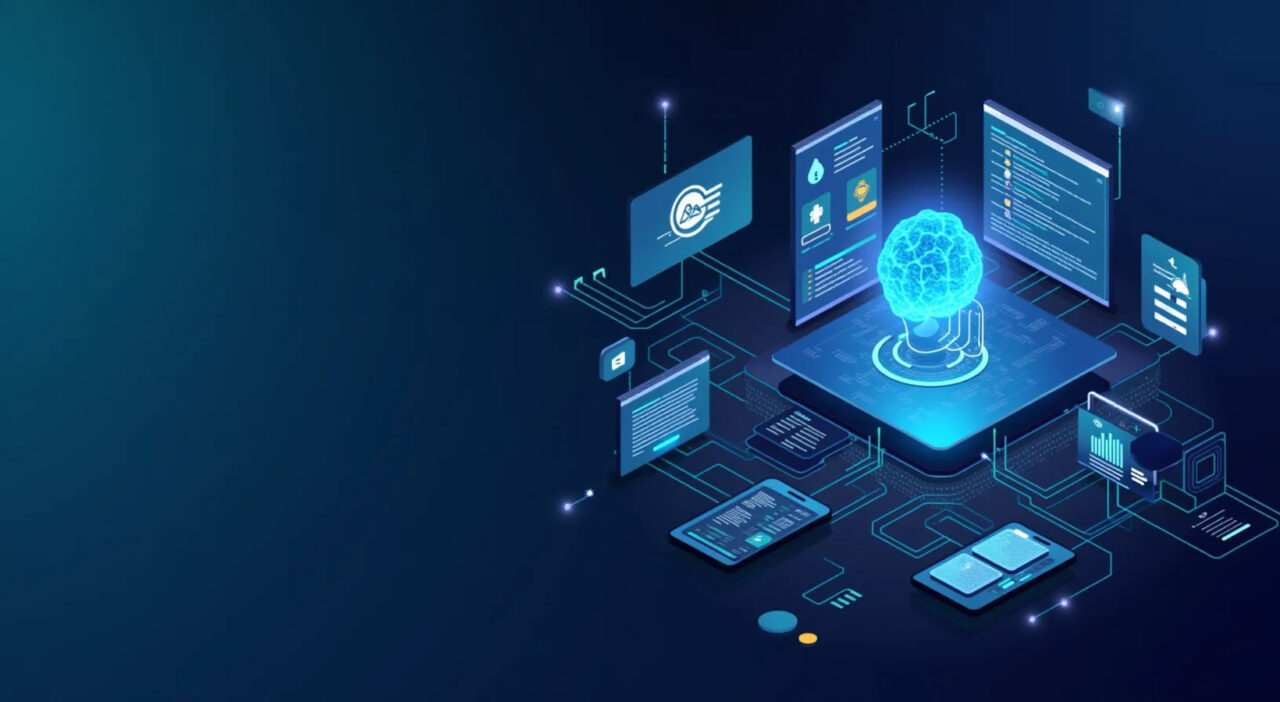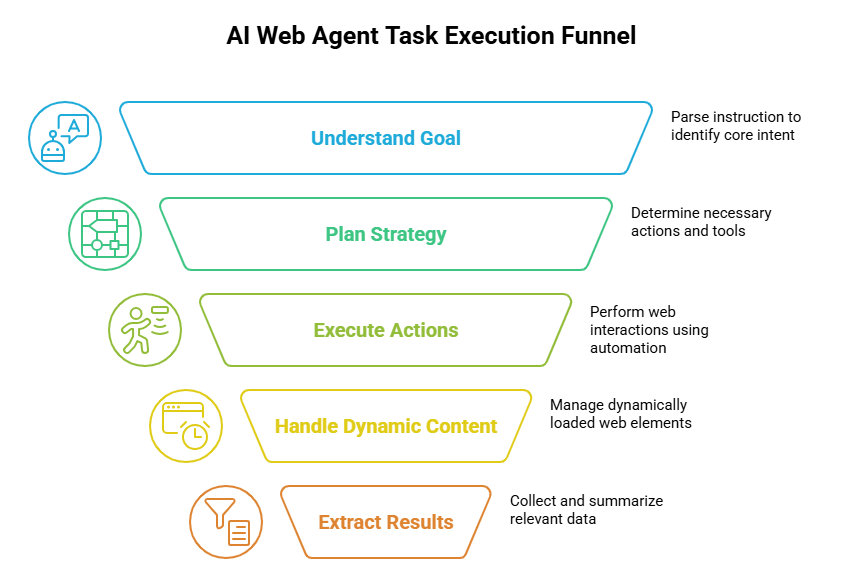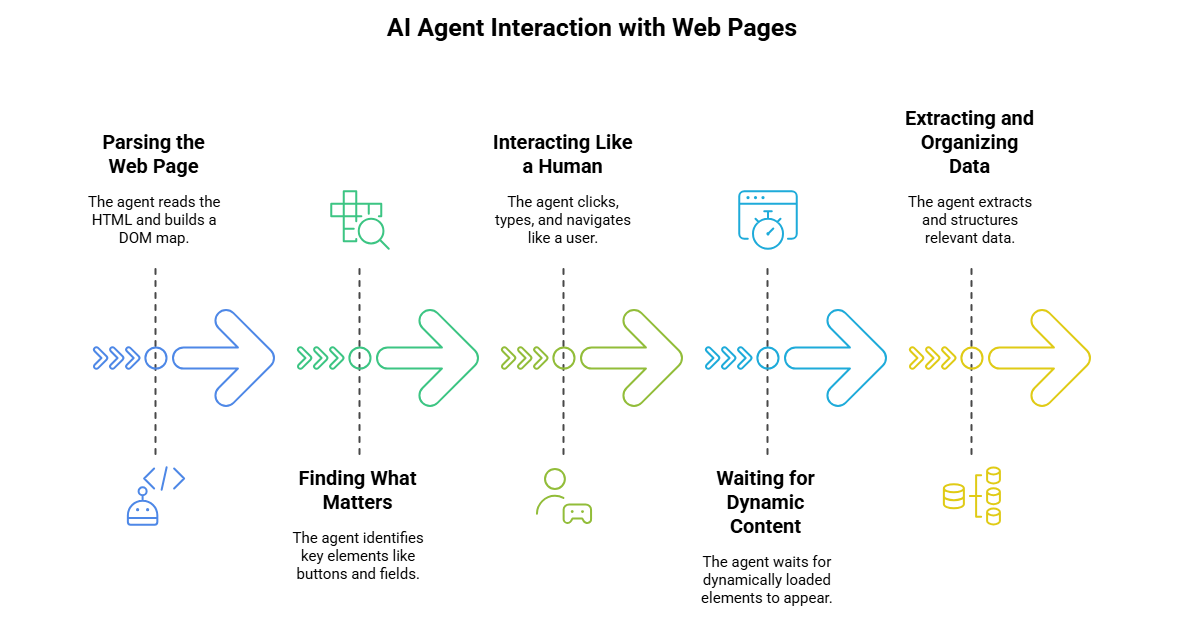
Web automation has been around for years—used to scrape data, autofill forms, and mimic clicks. But traditional bots rely on rigid scripts, easily breaking when a page changes or something unexpected appears. They’re fast, but not smart.
Now, a new wave of automation is emerging: AI agents.
These intelligent systems don’t just execute instructions—they interpret goals, adapt to context, and interact with websites much like a human would. Whether it’s gathering data, comparing products, or navigating complex web flows, AI agents bring reasoning and flexibility to tasks that were once purely mechanical.
In this blog, we’ll explore how AI agents are reshaping web automation—why they’re needed, how they work, what technologies power them, and where this space is headed next.
The Need for Intelligent Web Automation
Web data is growing exponentially, and so are the tasks tied to it. Researchers gather insights from dozens of articles. Shoppers compare prices across multiple e-commerce sites. Recruiters sift through countless job listings. All of this requires time, effort, and repetitive web browsing.
While browser extensions and scraping scripts automate specific actions, they fall apart when things change. A slight tweak in a website’s layout can break a script. More importantly, these tools can’t reason or decide—they just follow orders.
This is where AI agents step in. They bring adaptability, goal-driven execution, and the ability to understand human intent.
How It Works
At a high level, AI web agents act like intelligent assistants. You provide them with a task, and they figure out the steps required to complete it—then execute those steps across the web. Here’s how the process typically plays out:
- Understanding the Goal: The user types a natural language instruction like “Find top-rated wireless earbuds under $100.” The language model parses this and identifies the core intent.
- Planning the Strategy: The agent determines what actions are needed—such as which sites to visit, what to search for, and how to filter results. This logic is often coordinated by frameworks like LangChain, which helps break down tasks, manage tool use, and maintain memory between steps.
- Executing Actions: Using browser automation tools, the agent visits websites, searches, clicks links, scrolls, and interacts with forms—mimicking human behavior.
- Handling Dynamic Content: If a page loads content dynamically (like with JavaScript), the agent waits for specific elements to appear or triggers events to reveal hidden data.
- Extracting and Summarizing Results: The agent pulls relevant data from the page (product names, prices, reviews), then uses the language model to summarize or compare findings.
In more complex scenarios, tools like LangGraph allow the agent to make decisions mid-task—like retrying a failed step or branching to an alternate path—enabling more resilient and adaptive workflows.

The Technologies Behind It
AI web agents bring together multiple technologies that each handle a specific piece of the puzzle. Here’s how they come together:
- Large Language Models (LLMs) like GPT or Claude: These power the agent’s ability to interpret user instructions, make decisions, and generate summaries. They’re the brain of the operation.
-
Workflow Orchestration (LangChain & LangGraph):
LangChain enables the agent to chain steps together logically—deciding which tools to use, tracking memory, and moving between stages. - LangGraph, a layer built on LangChain, adds control over flow and branching logic, allowing agents to retry steps, handle loops, or pass control between multiple agents depending on what happens during execution.
- Memory and Vector Stores: When agents collect web content (e.g., text from articles or reviews), they often embed it and store it in a vector database like FAISS or Chroma. This allows the agent to search, compare, and reuse information efficiently.
- Natural Language Interfaces: Allow users to issue instructions conversationally.
- User Interface or API Layer: Most setups include a FastAPI backend or a lightweight UI so users can submit tasks, receive results, and view data in a clean format.
Each part contributes to making the agent not just functional, but intelligent.
How AI Agents Interact with the Web
AI agents aren’t just executing pre-written scripts—they interact with websites intelligently by understanding their structure and adapting on the fly. Here’s a simplified explanation of what happens behind the scenes:
- Parsing the Web Page: The agent reads the HTML of a web page and builds a map of its elements (called the DOM).
- Finding What Matters: It looks for buttons, input fields, or text blocks using tags, classes, or even content to decide what to click or extract.
- Interacting Like a Human: Once elements are identified, the agent clicks, types, scrolls, or navigates just as a human user would.
- Waiting for Dynamic Content: For websites that load content after the page renders, the agent waits for specific elements to appear before continuing.
- Extracting and Organizing Data: Finally, it pulls out relevant data (like prices, names, links), structures it into usable formats, and prepares it for summarization or storage.
This process allows agents to handle a wide range of tasks while remaining resilient to many common changes in page layout or design.

Limitations
As promising as AI agents are, they’re not flawless. Some current limitations include:
- Fragility with Complex Layouts: Sites with dynamic content or anti-bot measures can still confuse agents.
- Speed and Performance: Tasks like page loading and data extraction can be slow, especially with real-time interaction.
- Privacy and Ethics: Automatically scraping or interacting with web services may breach terms of service or ethical boundaries.
- Lack of Deep Context: Even smart agents may misinterpret user goals without clear, specific prompts.
These limitations highlight the need for responsible use and continuous refinement.
Future Scope
The potential for AI web agents is enormous. Here’s where the technology could head next:
- Multi-Agent Collaboration: Teams of specialized agents working together—one planning, one executing, one summarizing.
- Voice Integration: Issue commands using speech, with real-time feedback and updates.
- Smarter Memory Systems: Agents that remember past tasks, learn from interactions, and improve over time.
- Integration Across Apps: Beyond browsers—agents could work across emails, calendars, and even operating systems.
As language models grow and computing power scales, expect AI agents to handle increasingly complex tasks with minimal input.
Conclusion
AI agents aren’t just automating clicks—they’re transforming how we interact with the web. They bring intelligence, context-awareness, and adaptability to a space once dominated by rigid scripts. Whether you’re automating research, scraping dynamic sites, or simplifying online workflows, AI agents represent the next leap forward.
We’re just getting started. And if you’re not already experimenting with AI agents for web automation, now’s the time to explore what they can do.
About the Author

Arjun S is a Software Engineer at Founding Minds with over 3 years of experience in software development. He specializes in backend development with Python and is actively expanding his expertise in front-end development using React. Arjun focuses on building scalable, efficient, and reliable software solutions tailored to project needs. His problem-solving mindset and versatility makes him a valuable asset to his team.

